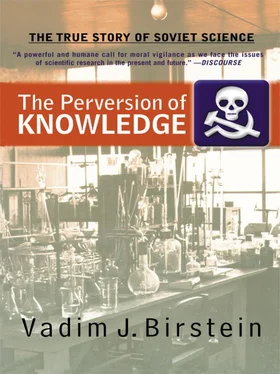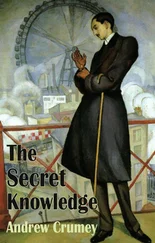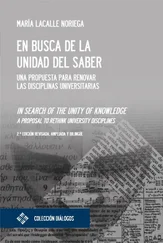In the end, Trotsky was attacked by a member of Eitingon’s team (Eitingon’s alias for the operation was “Tom”), the Spanish Communist Ramon Mercader, with an ice pick. 108The day after the assassination attempt, on August 21, 1941, Trotsky died in a hospital. 109In May 1944, the Mexican Federal Court condemned the killer Ramon Mercader (under his alias name “Jacques Mornard”) to twenty years’ imprisonment. After his release in May 1960, Mercader went to Moscow, where he was immediately secretly awarded the highest Soviet order, the Hero of the Soviet Union. In 1974, Mercader left Moscow for Cuba, where he died in 1978.
Filimonov was the supervisor of the experimental laboratories from 1939 during all the reorganizations (see Table 2.1). On January 18, 1942, as a result of the new reorganization, the NKVD Fourth Department was promoted to a directorate and combined with the NKVD Second Department, with Sudoplatov as its head. 110Eitingon became Sudoplatov’s deputy on August 20, 1942. 111In the new Fourth Directorate, Filimonov headed the Fourth Department, 112and Yakov Serebryansky became head of the Special (Terrorist) Group. In May 1943, after the division of the NKVD into the NKVD and NKGB, the Fourth Directorate became the NKGB Fourth Directorate. Sudoplatov headed it until the beginning of 1944. 113In February 1944, Sudoplatov left to head the NKGB Department “S,” created to supervise the analysis of atomic intelligence collected by both the NKGB and the Soviet Military Intelligence (GRU).
Within the NKVD Fourth Directorate, Mairanovsky and Muromtsev each had a laboratory. Both laboratories were under the direct supervision of Commissar Beria and his first deputy, Merkulov (Table 2.1). In 1943–1945, when Merkulov was NKGB commissar, his first deputy, Bogdan Kobulov, whom Beria brought to Moscow from Georgia in 1938, was also in charge of the laboratory. Sudoplatov and his deputy, Eitingon, were well informed about experiments in Mairanovsky’s lab. When Sudoplatov was tried in 1958, his involvement with Mairanovsky’s “laboratory of death” was one of the charges against him:
…As established [during the court trial], Beria and his accomplices committed terrible crimes against humanity: they tested deadly poisons, which caused agonizing death, on live humans. A special laboratory, which was established for experiments on the action of poisons on living humans, worked under the supervision of Sudoplatov and his deputy Eitingon from 1942 till 1946. They demanded he provide them only with poisons that had been tested on humans… 114
On March 22, 1946, the NKGB was renamed MGB, 115and on May 4, 1946, the new minister, Viktor Abakumov, replaced Merkulov. 116Sergei Ogol’tsov, who was appointed the NKGB/MGB first deputy commissar/minister on December 4, 1945, retained his position. Filimonov remained head of the Fourth Department of the MGB Fourth Directorate until June 1946, when the Fourth Department was disbanded. 117In October 1946, the entire MGB Fourth Directorate was dissolved. 118Sudoplatov, Eitingon, and their main staff were transferred to the newly organized Department “DR” (Special Service for Diversions and Intelligence) and then, in 1950, to Bureau No. 1 (Terrorist Acts Abroad). 119The creation of this bureau and Bureau No. 2 (Special Actions Within the Soviet Union) were approved by Stalin himself and then the Politburo (Document 10, Appendix II). Later, in Beria’s MVD, on May 30, 1953, Bureau No. 1 became the MVD Ninth Department (Acts of Individual Terror and Diversions) and after Beria’s arrest, on July 31, 1953, this department was merged with the MVD Second Main (Foreign Intelligence) Directorate. 120On August 21, 1953, Sudoplatov was arrested. On November 20, 1953, the Presidium (former Politburo) ordered the creation of a new Special Department 12 within the MVD Second Main Directorate with the same functions as Sudoplatov’s former Bureau No. 1: “for terrorist acts at the important military-strategic objects and communications at the territories of the main aggressive states, USA and England, as well as the territories of other capitalist countries.” 121
As Mairanovsky stressed in his letters to Semyon Ignatiev (in 1952), Beria (in 1953), and Khrushchev (in 1955) after he was arrested, Abakumov did not support his laboratory and ideas. After the main reorganization of the MGB, Mairanovsky’s lab was included in the newly organized MGB Department of Operational Equipment (OOT), 122headed by General Fyodor Zhelezov. 123Therefore, the position of the laboratory within the security service structure became the same as it was in 1937–1938. Head of the NKGB Department “B” (Operational Equipment) Yevgenii Lapshin, with whom Mairanovsky worked, was sent out of Moscow to head the city of Tula regional MGB branch. Department “B” was in charge of making Mairanovsky’s and other NKGB scientists’ discoveries available for NKGB practice. Lapshin was replaced by Major General A. Kochetkov. Later, in 1951–1953, A. Polkovnikov became head of this department. 124
In September 1948, Filimonov was dismissed from the MGB headquarters in Moscow (he subsequently became an alcoholic) and sent to head an MGB school in Lvov in the Ukraine. Later, in 1959, long after Mairanovsky’s arrest and conviction, his former laboratory (now Laboratory No. 12) ended up as part of the Directorate of Operational Equipment within the KGB. In 1978, under KGB chairman Yurii Andropov, Laboratory No. 12 was included in the newly organized Central Investigation Institute for Special Technology within the KGB Operational-Technical Directorate, or OTU (Table 2.1).
Although the existence of Mairanovsky’s lab was a closely held secret, in the late 1940s Sudoplatov lectured about it (without naming Mairanovsky) and its “developments” to the students of the MGB Special School. A former KGB officer, Ilya Dzhirkvelov, who defected to the West in 1980, later recalled:
At his [i.e., Sudoplatov’s] lectures we learned about practically every method of organizing sabotage, underground operations and the liquidation, i.e., the murder, of our enemies. He told us that a special Scientific and Technical Department of the KGB [i.e., MGB at the time], with a staff of nameless but exceptionally able doctors, chemists and technologists, was developing and producing new types of weapons and poisons and devices for carrying out “Liter L,” which was the code name for liquidation… Operations code-named “Liter I,” meaning kidnapping, and “Liter L,” can be carried out only with the approval of the Secretaries and Politburo members of the Soviet Communist Party…
…Even in those years the Technical Department of the KGB already had at its disposal fountain pens, cigarette cases and even fake cigarettes which could fire a fatal dose of poison. The poisons used left no traces in the body of the victim and produced the effect of a heart attack, a stroke or suffocation following an asthma attack. In addition, for kidnapping operations they had developed long-acting tranquilizers. 125
Sudoplatov also gave examples of successful NKVD/MGB assassinations. He proudly described in detail how, on the personal order of Stalin, in 1938 in Amsterdam he killed the Ukrainian nationalist leader Yevhen Konovalets, who lived in Germany and France, using a bomb camouflaged as a candy box. 126
THE LAB AFTER MAIRANOVSKY
After Mairanovsky’s arrest in 1951 and the reorganization of his laboratory, it was not completely disbanded. Laboratory No. 12 continued to exist under the directorship of Mairanovsky’s colleague and rival, Vasilii Naumov, and poisons were successfully used for executions abroad. In March 1953, after Stalin’s death, MGB minister Semyon Ignatiev wrote to the new USSR leaders Malenkov, Beria, Molotov, Bulganin, and Khrushchev:
Читать дальше











